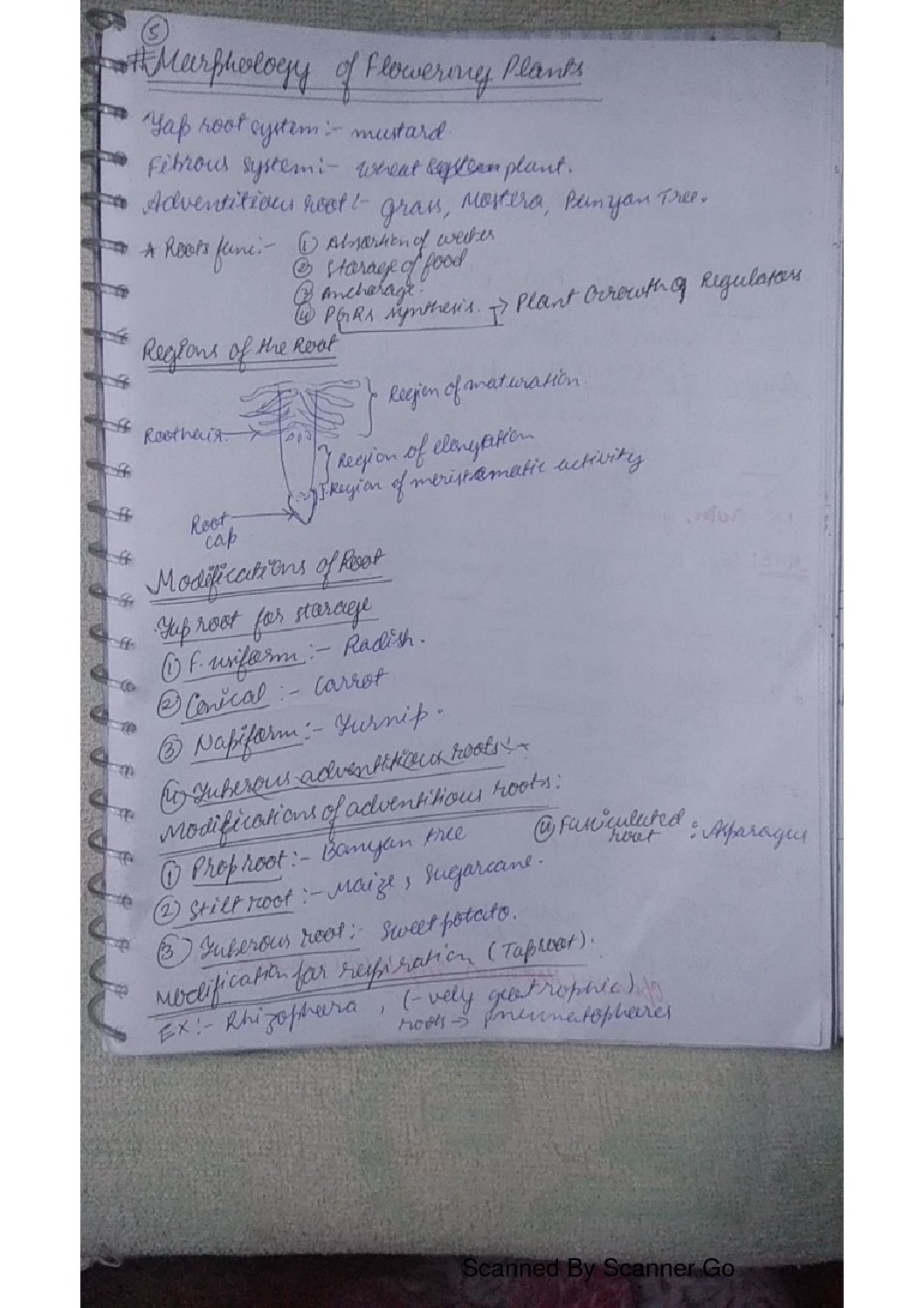Description
The morphology of flowering plants:
- Roots:
- Types: There are two main types of roots: taproots and fibrous roots. Taproots have a main, central root that grows deep into the soil, while fibrous roots consist of many smaller, branching roots that spread out close to the surface.
- Functions: Roots anchor the plant in the soil, provide support, and absorb water and nutrients from the soil. They also store food in the form of starch.
- Stems:
- Structure: Stems are cylindrical structures that grow above the ground and bear leaves, flowers, and fruits. They consist of nodes (where leaves and buds attach) and internodes (the spaces between nodes).
- Types: Stems can be herbaceous or woody. Herbaceous stems are soft, green, and flexible, while woody stems are hard, brown, and rigid due to the presence of secondary growth.
- Functions: Stems provide support to the plant, transport water, minerals, and sugars between roots and leaves, and serve as sites for the attachment of leaves, flowers, and fruits.
- Leaves:
- Structure: Leaves are flattened structures attached to stems at nodes. They consist of a blade (the flat, green part) and a petiole (the stalk that attaches the leaf to the stem).
- Functions: Leaves are the primary site of photosynthesis, where chlorophyll-containing cells convert light energy into chemical energy (sugars). They also exchange gases with the atmosphere, allowing the plant to take in carbon dioxide and release oxygen.
- Flowers:
- Structure: Flowers are the reproductive organs of flowering plants. They typically consist of four main parts: sepals (protective outermost layer), petals (often colorful and attractive to pollinators), stamens (male reproductive organs, consisting of anther and filament), and pistils (female reproductive organs, consisting of stigma, style, and ovary).
- Functions: Flowers facilitate sexual reproduction by producing gametes (pollen and ovules) and attracting pollinators like insects, birds, or wind to aid in pollination, fertilization, and seed production.
- Fruits:
- Structure: Fruits develop from the fertilized ovaries of flowers. They vary widely in size, shape, color, and texture, depending on the plant species. Fruits can be simple (developing from a single ovary) or compound (developing from multiple ovaries).
- Functions: Fruits protect seeds, aid in seed dispersal by animals or wind, and provide nutrition and resources for seed germination and early seedling growth.
- Seeds:
- Structure: Seeds are the reproductive units of flowering plants, containing a young plant (embryo) and stored food reserves (endosperm or cotyledons) enclosed within a protective seed coat.
- Functions: Seeds ensure the continuation of plant species by dispersing and germinating under suitable conditions to give rise to new plants.
Understanding the intricate morphology of flowering plants is crucial for NEET students as it provides insights into plant structure, function, and adaptation, which are fundamental concepts in biology and botany.








Reviews
There are no reviews yet.